Proper Care for Your Gums
July 2nd, 2013
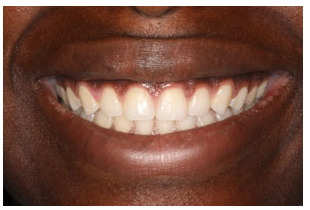 When people think of dental hygiene, they often only focus on the teeth. That's what most people see, right? Bright, white, straight teeth are the goal. However, most people neglect to consider how important it is to take care of your gums properly. While sore, sensitive gums can occur from lack of brushing and proper care, the gum's biggest threat is Periodontal Disease, or Gum Disease. According to the National Institute of Dental and Craniofacial Research, over 8% of adults and 17% of seniors over the age of 65 have periodontal disease. Without proper care of your gums, Periodontal Disease can cause red and bleeding gums, bad breath, sensitive teeth, pain while chewing, and eventually loose teeth. However, if you take the proper steps to good oral hygiene, which includes care for your gums, you will be able to avoid this terrible disease.
When people think of dental hygiene, they often only focus on the teeth. That's what most people see, right? Bright, white, straight teeth are the goal. However, most people neglect to consider how important it is to take care of your gums properly. While sore, sensitive gums can occur from lack of brushing and proper care, the gum's biggest threat is Periodontal Disease, or Gum Disease. According to the National Institute of Dental and Craniofacial Research, over 8% of adults and 17% of seniors over the age of 65 have periodontal disease. Without proper care of your gums, Periodontal Disease can cause red and bleeding gums, bad breath, sensitive teeth, pain while chewing, and eventually loose teeth. However, if you take the proper steps to good oral hygiene, which includes care for your gums, you will be able to avoid this terrible disease.
Eat Right
The first step to proper gum care is to eat healthy foods that promote the best possible gums. That starts with avoiding sugars. Sugar isn't just candy for you, it's candy for bacteria as well. Plaque forms when sugar feeds the harmful bacteria that can be roaming in your mouth.
As well, focus on eating foods that are high in Vitamin C and Zinc. Vitamin C is a great defender of your gums as it builds up white blood cells, which have the ability to fight bacteria. Zinc also improves your white blood cell count but also helps restrict the build up of plaque.
There are plenty of foods that help promote healthy gums as well. Check our list of foods that are good for your teeth.
Don't forget to drink plenty of water as well. Especially after eating, water is a great way to flush out the teeth and gums to keep any potential bacteria from forming.
Brush The Right Way
Of course, brushing is a must and should be done at least twice a day. Make sure you're following a correct brushing technique. It's important to note that you don't have to brush your teeth or gums too hard. A soft touch away from the gums, yet still slightly massaging them, is the best technique.
It's best to brush at least twice a day. If possible brush after breakfast, lunch, and dinner. If you're unable to brush directly after a meal, use water to swish around in your mouth for 30 seconds. This will help clear most food and sugars from your teeth.
Find the Right Toothpaste
There are plenty of toothpastes to choose from, many with special ingredients that focus on different parts of the mouth. Of course there's plenty of teeth whitening and cavity-preventing toothpastes, but there are also ones that focus on fighting gingivitis and gum disease. If you are experiencing any of the symptoms that were listed above, think about using toothpaste that specifically focuses on the gums.
Floss Often
Flossing is a great way to keep food and bacteria that forms in between your teeth from traveling down into your gums. Flossing is extremely important for proper gum care. It's recommended to floss once a day. Focus on the tooth more than the gums. Though flossing is a critical element to healthy gums, it's really about removing the plaque and build up between your teeth before it reaches the gums.
Visit Your Dentist
Even if you take proper steps to keeping your gums healthy, there can always be complications that go much further than you think. It's recommended to visit your dentist twice a year to ensure you're on the right track to healthy gums, not just for the present, but for the future as well.
If you have any more questions, contact Water Tower Dental Care and speak to our expert dentists and team to put you on the path to healthy oral hygiene.

 Teeth need a great deal of calcium to stay strong, there's almost no better food to get it than through dairy products. Milk and cheese especially are great for your teeth and jawbone. Calcium prevents tooth decay by protecting your teeth from periodontal disease, a form of gum disease, as well as maintaining healthy bone structure of the teeth and jaw. About one-third of your body's bones and teeth are made of calcium, so it's important to have a great deal of it in your system. Yogurt, tofu, and soy milk are also good sources of calcium.
Teeth need a great deal of calcium to stay strong, there's almost no better food to get it than through dairy products. Milk and cheese especially are great for your teeth and jawbone. Calcium prevents tooth decay by protecting your teeth from periodontal disease, a form of gum disease, as well as maintaining healthy bone structure of the teeth and jaw. About one-third of your body's bones and teeth are made of calcium, so it's important to have a great deal of it in your system. Yogurt, tofu, and soy milk are also good sources of calcium. Another great food that’s rich in both calcium and Vitamin D is salmon. Without Vitamin D, your body cannot absorb and utilize the calcium that you've just consumed from your dairy products. Consuming food rich in Vitamin D is essential to healthy teeth. What better food to eat than salmon for your Vitamin D as it's also rich in Omega-3 fatty acids which help cognitive function, eye, cardiovascular, skin, and hair health.
Another great food that’s rich in both calcium and Vitamin D is salmon. Without Vitamin D, your body cannot absorb and utilize the calcium that you've just consumed from your dairy products. Consuming food rich in Vitamin D is essential to healthy teeth. What better food to eat than salmon for your Vitamin D as it's also rich in Omega-3 fatty acids which help cognitive function, eye, cardiovascular, skin, and hair health. Though mostly all vegetables are great for your teeth, there are many benefits to crunchier vegetables like cauliflower, broccoli, and cucumber. Crunchy vegetables contain many vitamins, minerals, and antioxidants that are all good for your health. Specifically to teeth, they contain Vitamin C, which helps prevent plaque and bacteria. As well, crunchy vegetables contain phosphorus, which is another major player in absorbing calcium. Last, crunchy vegetables promote and stimulate your salivary production. This is the body's natural way of washing debris and food from your teeth and gums while providing disease-fighting enzymes throughout your mouth to prevent infection.
Though mostly all vegetables are great for your teeth, there are many benefits to crunchier vegetables like cauliflower, broccoli, and cucumber. Crunchy vegetables contain many vitamins, minerals, and antioxidants that are all good for your health. Specifically to teeth, they contain Vitamin C, which helps prevent plaque and bacteria. As well, crunchy vegetables contain phosphorus, which is another major player in absorbing calcium. Last, crunchy vegetables promote and stimulate your salivary production. This is the body's natural way of washing debris and food from your teeth and gums while providing disease-fighting enzymes throughout your mouth to prevent infection. While crunchy vegetables are a good source of Vitamin C, oranges and other citrus fruits are your ultimate source. Vitamin C is extremely important to the teeth because of its ability to strengthen blood vessels and connective tissues. This is vital to keeping your teeth connected to your jaw. As well, vitamin C is an anti-inflammatory, which can help reduce and/or slow the progression of gingivitis.
While crunchy vegetables are a good source of Vitamin C, oranges and other citrus fruits are your ultimate source. Vitamin C is extremely important to the teeth because of its ability to strengthen blood vessels and connective tissues. This is vital to keeping your teeth connected to your jaw. As well, vitamin C is an anti-inflammatory, which can help reduce and/or slow the progression of gingivitis. Last, onions are a great source for anti-bacterial sulphur compounds, which play a major role in killing a lot of the bacteria that breed on your teeth and gums. If you don't mind just a little stinky breath for a minute, it's best to eat the onions raw. This will help you get the best from the vegetable to help prevent a fair amount of tooth decay.
Last, onions are a great source for anti-bacterial sulphur compounds, which play a major role in killing a lot of the bacteria that breed on your teeth and gums. If you don't mind just a little stinky breath for a minute, it's best to eat the onions raw. This will help you get the best from the vegetable to help prevent a fair amount of tooth decay.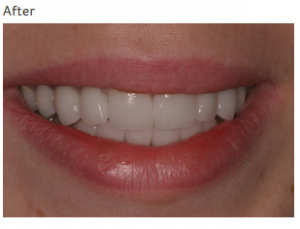 Many patients think that the longer they wait to come to the dentist, the closer they get to un-repairable teeth. Though untreated dental conditions can rapidly affect the health and appearance of your teeth, our team at Water Tower Dental Care can always do something to help. More likely than not, a
Many patients think that the longer they wait to come to the dentist, the closer they get to un-repairable teeth. Though untreated dental conditions can rapidly affect the health and appearance of your teeth, our team at Water Tower Dental Care can always do something to help. More likely than not, a 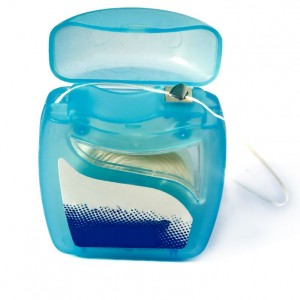 Flossing is an important part of dental hygiene. One should consider it just as beneficial as brushing their teeth in the fight to prevent plaque, cavities, and gingivitis. However, from last week's post:
Flossing is an important part of dental hygiene. One should consider it just as beneficial as brushing their teeth in the fight to prevent plaque, cavities, and gingivitis. However, from last week's post: 
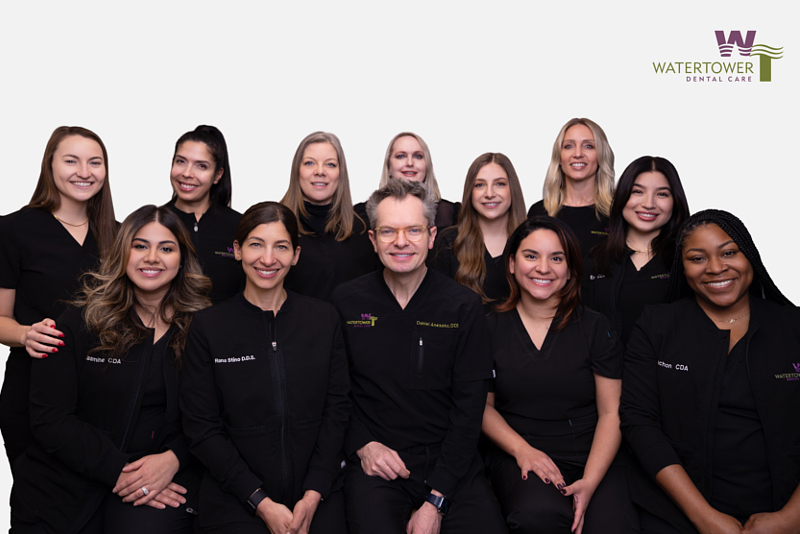


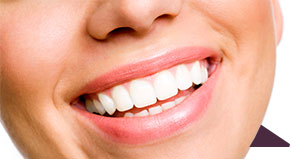
 Website Powered by Sesame 24-7™
Website Powered by Sesame 24-7™